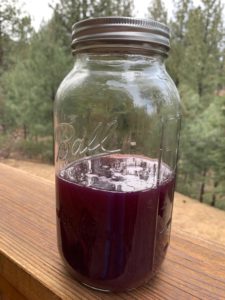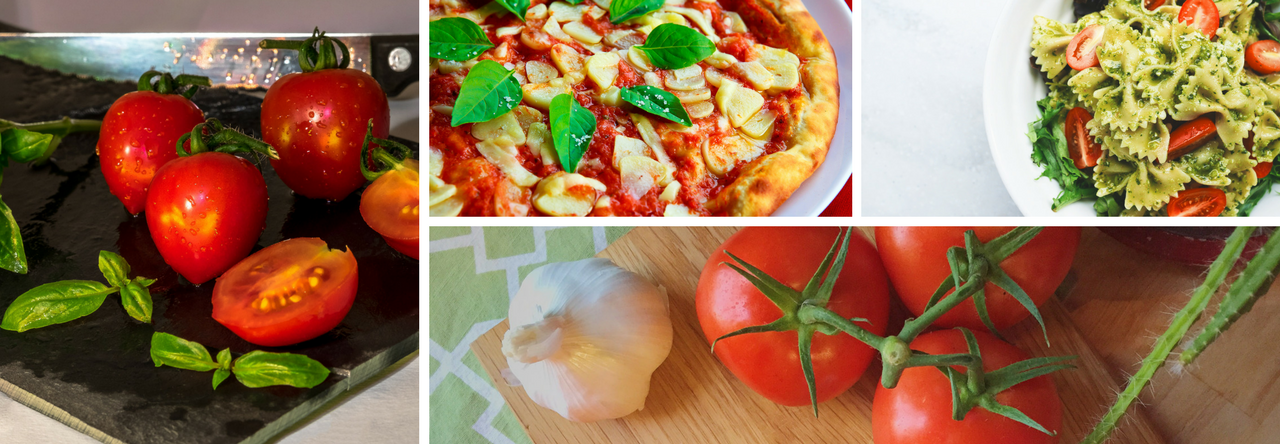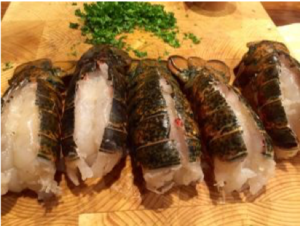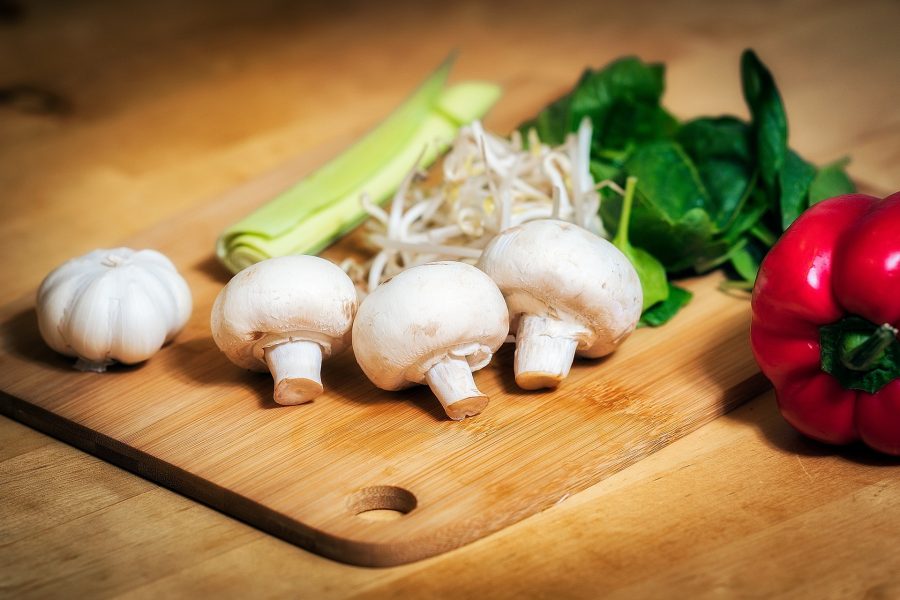This is, quite possibly, my preferred pasta dish among the four traditional Roman pastas. Thus, I spent lots of time trying this dish in the best Restaurants in Roma and around the world and I studied the literature related to this dish. In short, this is the recipe that is most often screwed up, with many—often disgraceful—variations.
This is a new recipe, in that it did not appear in the Italian cookbooks until after the II world war. There are 2 theories about the origin of this dish: the first one, is that during the end of world war II the American soldiers brought bacon to Italy and that led someone to cook pasta with bacon, parmigiano and eggs. This recipe is served at “Il Moro,” a trattoria near Fontana di Trevi (in “Vicolo del Moro) where you can eat possibly the best Carbonara in the world (there it is called “Spaghetti al Moro”). The other theory, the more widespread theory, is that the Carbonara was a dish made by the shephards in Roma. This much more common Carbonara, which uses guanciale and pecorino rather than bacon and parmigiano (pecorino is also known in the US as “Romano cheese”) can be found in most restaurants in Roma. After many years of trying, I think the best interpretation of this type of Carbonara is the one at Sora Lella, on the Isola Tiberina where Renato Trabalza, the Chef and nephew of Sora Lella, has perfected it to an art. Other places in Roma where you can eat an excellent Carbonara are: Maccheroni, in Piazza delle Coppelle, near via della Scrofa; Roscioli, near Campo dei Fiori.
So which one is best? The one with bacon and parmigiano at Il Moro or the one with guanciale and pecorino at Sora Lella? I am not sure yet, therefore everytime I go to Roma I always go to both restaurants. As for: can you make it as good as them? Sure, but you need practice. Here are the two recipes.
Important!
This is a fast and apparently very easy dish to prepare, yet it is the most easily screwed up recipe I know of. Unless you move fast at the end –as you mix the eggs with the pasta , and you eat the pasta immediately, it will not be good.
Ingredients (variant “al Moro” with bacon and parmigiano) for 3 people (or 2 hungry people or 4 people who watch their diet)
- 300 grams of spaghetti (you can also use rigatoni)
- 4 eggs – 1 whole egg, and 3 egg yolks, combined together in a small bowl
- 150 Grams of thick sliced pork bacon. Cut into strips of about ½ cm tick and 3 cm long
- Black pepper to taste
- About 2/3 cup of Parmigiano Reggiano freshly grated cheese. (I suggest you use a zester/microplane to have the right consistency of the grated parmigiano).
Preparation
- In a medium skillet (padella), put the bacon on high heat as soon as it sizzles, low the fire and let it go medium/low for about 8 minutes so it releases the fat and becomes golden –not burned!
- It should not become super-crisp, like the kind of bacon you serve with eggs, nor should it be “soft”!
- Meanwhile, boil the water in a pot. When it comes to a rapid boil, add the spaghetti. Mix it with a long-handled wooden spoon so that it separates and does not stick to the bottom of the pan. Add salt to the pasta water once it has come back to a boil (I usually use about 2 TB of sea salt in the pasta water).
- Meanwhile grate the Parmigiano (you need about ½ of a cup of grated Parmigiano Reggiano. I’ve found that Americans Restaurants often use much more Parmigiano than Italians do, which ends up covering up the great taste of the food.)
- As the spaghetti cook, in a small bowl, combine one entire egg + 3 egg yolks. Beat the eggs with a whisker or a fork until frothy, add 2 TB of grated parmigiano and 1Tb of the fat from the bacon, mix well.
- Warm a pasta serving bowl, or the bowls in which you will serve the pasta, in a microwave oven or with hot water.
- The following must be done very rapidly, the faster you move, the better the outcome:
- Remove 1 cup of the boiling water with the pasta and save, drain the pasta very al dente and pour into the skillet with the bacon –“medium” fire and adding 1/4 cup of water mix constantly for 2 minutes and then, turn off the fire and add the beaten eggs. Poor the eggs in center of the skilled over the pasta, mix constantly and rapidly the pasta for 1- 2 minutes, adding the reserved water if necessary. The goal here is that the egg “cooks” but does not “scramble”: it does not have to become a scramble egg pasta! As you mix, add a little bit at the time all the the grated parmigiano. Be careful not to add too much water: you need a cream coating the pasta. If you add too much water it will be liquid! If you do not add water or mix rapidly will scramble! The trick is to get it right: creamy yellow sauce!
- Transfer in a warm bowl or directly in warm plates and enjoy
- Alternative safest strategy if you are not confident that you can mix very rapidly on the skillet which will cause the eggs to scramble.Depending on how salty was the bacon you used, you may need to add salt.
Variant of this recipe substituting guanciale and pecorino (for 4 people)
Here is the varient of the recipe with guanciale and pecorino. Guanciale is the fat from the cheek of the pig, alternatively you may use good pancetta f
- 400 grams of spaghetti (you can also use rigatoni) –recipe from Renato Trabalza, the Chef at Sora Lella.
- 4 whole eggs and 2 egg yolks combined together in a small bowl
- 200 Grams of medium sliced guanciale. Cut into strips of about ½ inch
- 1 splash of white wine (about 2 spoons)
- Black pepper to taste
- About 2/3 of cup of Pecorino Romano freshly grated cheese. (I suggest you use a zester/microplane to have the right consistency of the grated parmigiano).
Same as above except just before you drain the pasta, add the wine to the skillet with guanciale, and bring the fire to high for 30 seconds so the alcohol evaporates, drain in the main time the pasta, add to the skillet with the guanciale, lower the fire to minimum mix and follow steps as for the variant with bacon.
Suggested Wine Pairing
My preferred wine for this pasta is a Barbaresco (10 or more years old), or a good Barolo of a similar age. Alternatively, you can pair this with a younger Barbera or Chianti or Cirò Rosso.
Italiano: Spaghetti alla Carbonara
Questo è, forse, il mio piatto di pasta preferito tra le quattro paste tradizionali romane. Questa è la ricetta che spesso è la più incasinata, con molte varianti, spesso vergognose. E` una ricetta “nuova’ che appare nei libri di cucina solo dopo la II guerra mondiale, e ci sono due teorie sulla provenienza: la prima e ‘che i soldati americani avevano il bacon e cosi qualcuno si mise a fare la pasta col bacon e parmigiano, la seconda e ‘che viene dai pastori di pecore, che perciò usavano il pecorino romano e il guanciale. Probabilmente tutte e due le teorie sono giuste. Quella che seguono sono le due ricette migliori –e ne ho girati di ristoranti per provare le varie carbonare!, che ho imparato da “Il Moro”, una trattoria vicino a Fontana di Trevi (in “Vicolo del Moro) dove si chiama “Spaghetti al Moro” e dove quando abitavo a Roma mangiato una volta la settimana,–questa è la carbonara con bacon e parmigiano; e poi quella più diffusa, dei pastori, con pecorino e guanciale: Renato la fa ottima, da “Sora Lella” sull’isola Tiberina, e` anche ottima da “Maccheroni”, in Piazza delle Coppelle, da “Roscioli”, vicino a Campo dei Fiori e da “Papa Giovanni” in Via dei Sediari di fianco al Senato.
Importante! Questo è un piatto veloce che pare facile da preparare, ma a meno che non vi muovete velocemente alla fine – quando si aggiungono le uova-, sarà un disastro. Infatti, è quasi la regola ai ristoranti mangiare carbonare coll’uovo crudo o alla “stracciatella”. Per questo si usa il bianco dell’uovo e l’acqua, per proteggere il rosso e cuocerlo al punto giusto. Comunque finche` non siete bravi non provate a farla per più di 4 persone.
Ingredienti, per la Carbonara con Bacon e parmigiano (2-4 persone a secondo dell’appetito)
- 300 grammi di spaghetti (o rigatoni)
- 4 uova – 1 intero, e 3 rossi, sbattuti insieme
- 150 grammi di bacon tagliati a strisce di circa 1 cm x 2 cm.
- pepe nero
- 2/3 di cup di Parmigiano Reggiano grattato al momento con uno zester (“grattalimone”, importante dettaglio per averlo della consistenza giusta)
Preparazione
- In una padella media, mettere il bacon, fuoco forte appena ‘sfricchiola” abbassare il fuoco a medio-basso e lasciare che rilasci il grasso e si indori per circa 8 minuti. Il guanciale non deve diventare super croccante, come il tipo di pancetta che si serve con le uova!, ne deve rimanere “mollo”.
- Nel frattempo, fate bollire l’acqua in una pentola, quando bolle aggiungete il sale e calate la pasta.
- Grattugiare il Parmigiano
- Un paio di minuti prima che gli spaghetti siano pronti, in una piccola ciotola, sbattete le uova con la frusta o una forchetta fino a renderle spumose, aggiungete 2 cucchiai di parmigiano e 1 cucchiaio del grasso dalla padella con il bacon.
- Scaldate con acqua calda (o nel forno a microonde) la zuppiera in cui servirete la pasta.
- Quanto segue deve essere fatto molto rapidamente, più veloce ti muovi, migliore è il risultato;
- Scolare la pasta molto al dente conservando 1 cup di acqua e versate la pasta nella padella con il guanciale e ¼ di cup cup di acqua e mescolate rapidamente 2 minut1 –fuoco medio, spegnere il fuoco, aggiungete le uova sbattute con parmigiano e grasso, versandole al centro della padella sulla pasta, e girate rapidamente per evitare che l’uovo “stracci” –se luovo va in perfiferia della padella “straccia”, se vedete che si va seccando, un po’ dell’ acqua della pasta che avete messo da perte e continuate a girare rapidamente. Mentre girate aggiungete il resto del parmigiano, un po per volta, e poi il pepe nero. Diventa una salsa gialla cremosa bellissima in un paio di minuti. Servite subito. Attenzione a non mettere troppa acqua altrimenti invece che una crema che copre gli spaghetti –perfetta carbonara, la salsa sara` liquida!
Metodo alternativo, per diminuire il rischio che l’uovo stracci:
Dopo che avete mischiato la pasta con il bacon e un po’ d’acqua versatela in una zuppiera tiepida (immersa in acqua calda e poi asciugata), e, qui servono due persone, una gira la pasta rapidamente nella zuppiera senza mai fermarsi, l’altra ci versa sopra lentamente il battuto di uova e poi il resto del parmigiano.
Ingredienti per variante con guanciale e pecorino per 4 persone:
- 400 grammi spaghetti o rigatoni –ricotta Renato Trabalza, nipote di Sora lella e Chef a questo famoso ristorante Romano sull’isola Tiberina.
- 4 uova intere e due rossi sbattuti insieme in una ciotola (cioè un uovo intero e mezzo rosso a persona)
- 200 grammi di guanciale tagliato a strisce di circa ½ cm di spessore per 2-3 cm di lunghezza una spruzzata di vino bianco (circa 2 cucchiai), non esagerate!
- Pepe nero
- Circa 2/3 cup di Pecorino Romano grattato fresco. (Usate uno zester chiamato pure microplane o grattalimoni, per avere la giusta consistenza)
Procedete come per quella “Al Moro” eccetto che prima di scolare la pasta aggiungete il vino alla pancetta alzate il fuoco 30 secondi e fate evaporare l’alcol, poi tutto come sopra, quello che cambia sono gli ingredienti e la proporzione con le uova.








